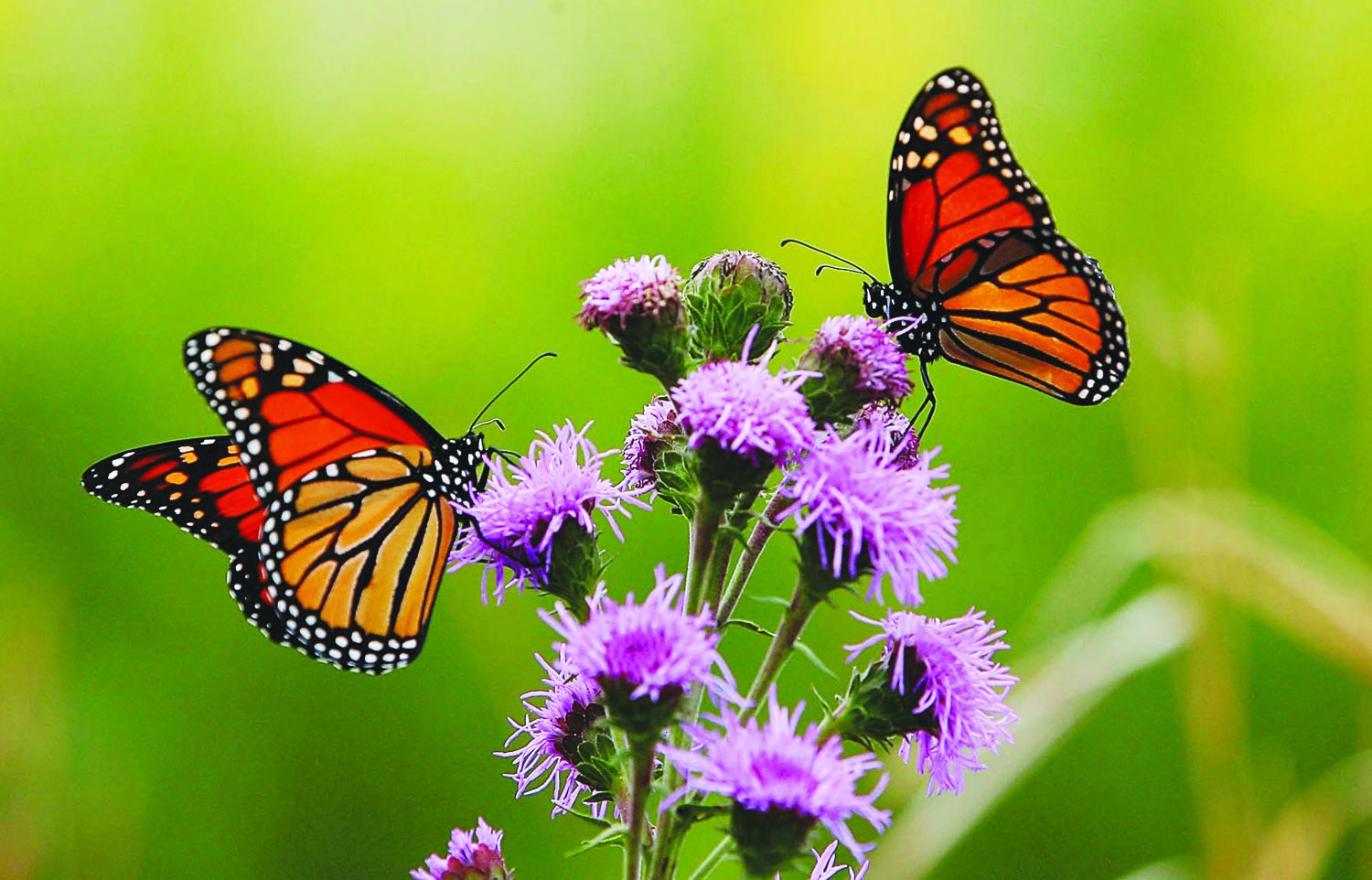Tracking butterflies with convicts: A WSU research story
Two monarch butterflies feed on a Blazing Star plant at the USDA Forest Service’s Midewin National Tallgrass Prairie in Illinois, Friday, Sept. 1, 2006.
September 19, 2014
Max security prisoners located at the Washington State Penitentiary are setting butterflies free this week.
David James, Ph.D., is an entomologist at Washington State University, has inmates volunteering to participate in one of his studies.
The inmates recently began releasing the butterflies in the order in which they hatched last week.
“They’ll be released almost every day for two weeks,” James said. “Once it gets to be October it is too cold for them to fly.”
Mental Health Counselor Bill Coleman said, “We take them down to the Snake River and out into the country. Some of the homes have really nice gardens that help the monarch’s transition over the next few days.”
“In the west, the monarch butterfly populations are smaller, particularly smaller than the east, to tag wild populations wouldn’t achieve what we are trying to do,” James said.
The idea behind the study is to track migratory patterns of western monarch butterflies, because recent findings show they could be travelling as far as Mexico.
“We are trying to prove where they go and surprisingly there hasn’t been any sort of research done similar to this in the northwest” James said.
“The inmates get to rear the caterpillars from eggs and nurse them throughout their lives,” said Coleman.
Once the caterpillars have made the transformation, the inmates tag the butterflies with a sticker on the back of their wing with a URL to contact the university.
“It keeps them occupied and gives them a link to nature,” James said.
The prisoners are often rotated through the project so most get a chance to participate.
“Some of the lower functioning mental health cases can have a mentor with them to help fulfill the tasks at hand,” Coleman said.
Nella Letizia participated in the project in 2012. She said the inmates “devoted a lot of creativity, effort and care to the monarchs so they would be healthy.”
“It’s therapeutic, it helps the prisoners as well as the monarch population,” Coleman said.
Inmate Gilbert London said watching the change of the monarch butterfly is similar to what they are trying to do: “Change and become something better.”
Letizia said, “(London) had tattoos on both forearms his head was buzz cut and I don’t know what he had done to be in the penitentiary, (but) listening to Gilbert I saw the care and nurture of it.”
The study started out with around 400 butterflies. This year the inmates at the Walla Walla penitentiary are releasing around 6,000 monarchs.
If any tagged monarchs are sighted please email monarch@wsu.edu with the location.









